5 Steps to Treat Lower Back Pain from Deadlifts
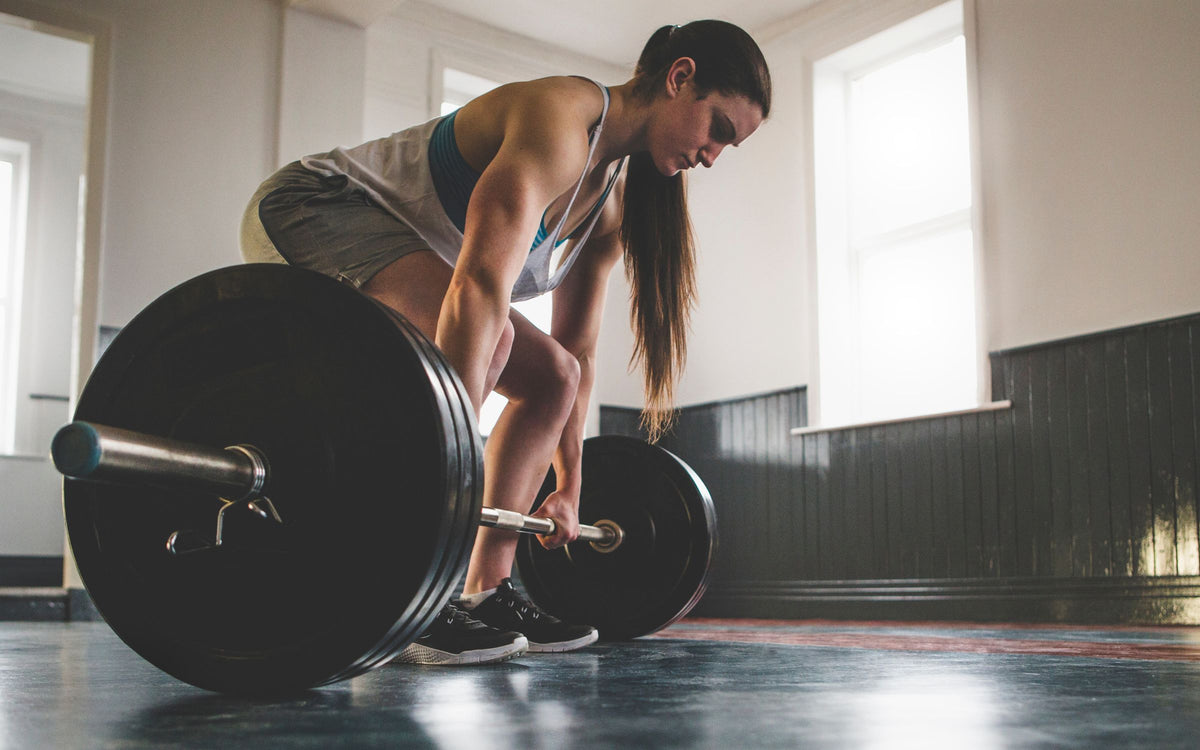
Deadlifts are generally regarded as good for your back, with some research suggesting they’re a good step in addressing some types of back pain. However, plenty of things can go wrong with a technical and precise physical activity like this. So, if you’ve got lower back pain from deadlifts and it’s feeling different from a run-of-the-mill case of DOMS, here are our tips to address it.
Assess your symptoms
First thing’s first, check for red flags.
- Do you have shooting pain down one or both legs?
- Are you having trouble controlling your bowels or bladder?
- Do you have headaches or blurred vision?
- Difficulty moving without pain?
- Persistent stiffness?
- Changes in sensation around your legs, glutes, or lower back?
If you do, go to a doctor ASAP. These are signs of a serious injury along the lines of a ligament rupture or a herniated disk. If you don’t have these symptoms, though, there’s a good chance the injury might be a minor sprain or pulled muscle and will heal within a few weeks without much intervention.
See a specialist
But even with less severe injuries, you should still head to a physiotherapist or osteopath for good measure. They’ll be able to give you a more accurate diagnosis and advice on how best to deal with your issue. Not to mention, the lower back is a pretty complex structure. While some causes of pain are clear-cut and easy to identify, others may point to a more serious underlying issue. And the faster you know about it, the better.
Rest
Rest is essential for letting injured tissues heal. For 48 hours after you first start noticing back pain after deadlifts, try not to put your back under strain. That means no strenuous exercise or heavy lifting.
But you shouldn’t just sit around or lay in bed, either. First, laying on your back can affect blood flow to the injury site. Second, sitting does a number on the lumbar spine. While you may not feel it, the pressure on it increases by as much as 90% compared to standing. And third, many specialists recommend something called “active rest.” Basically, unlike traditional passive rest, active rest involves movement. Go for a walk, wander around the house, or take a dip at the beach. These low-impact activities will maintain your back’s tolerance for movement and body weight and keep vital nutrients and oxygen circulating into the injury site.
Learn more: Train Against Pain: Joint Pain Relief, Injury Recovery, and Protection
Brace
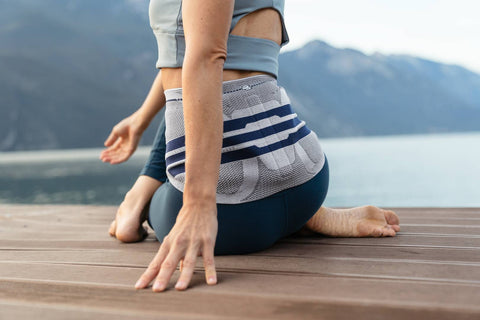
LumboTrain
Bracing is an important step in injury recovery, and a quality back brace can work wonders. For example, our LumboTrain combines silicon padding and compression knit. The pads massage and soothe painful areas while the knit activates your muscles, helping them better support your lumbar. And as this back brace focuses on your body’s ‘internal’ support system (muscles) instead of external stays, it won’t limit your range of motion. You can also wear it when you return to deadlifting to avoid future lower back injuries.
Check out the CRMO study on the LumboTrain’s pain relief and mobility benefits: LumboTrain Controlled Trial
Exercises for lower back pain after deadlifts
After a reasonable rest period, start strengthening and stretching your back and core. These exercises will get your lower back back into deadlifting shape and help you avoid future injuries to that area.
Dead Bugs
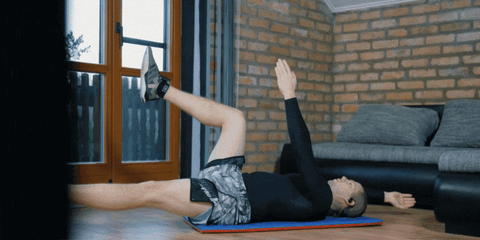
Dead Bugs is one of the best core strengthening exercises. Unlike crunches, it doesn’t aim for the ‘vanity’ muscles that form your six-pack. Instead, it targets the deep core muscles responsible for supporting your spine and keeping you upright and balanced.
- Lay on your back on a mat.
- Lift and straighten your arms so they’re at a 90-degree angle with the floor. Engage your core. Lift your legs, bending your knees at a 90-degree angle, so your thighs are perpendicular to the floor. This is the starting position.
- Keeping your core engaged and lower back in constant contact with the mat, lower your left arm over your head while simultaneously lowering and extending your right leg. Move slowly and steadily, ensuring minimal twisting and lifting in your back and hips, and stop right before your hand and heel touch the ground.
- Slowly return your arm and leg to the starting position.
- Repeat for the right arm and left leg.
- Do 10-15 reps for both sides.
- Gradually increase your rep count as your core gets stronger.
Bird Dog
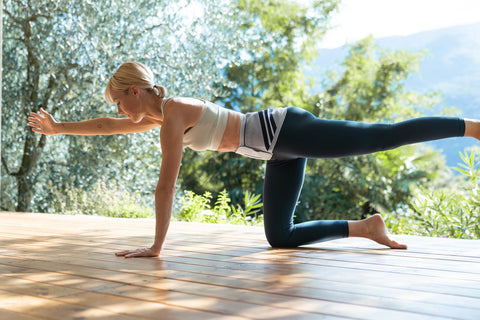
This exercise works your hamstrings, glutes (including the medius and minimus) and deep core, which are crucial for a good deadlift.
- Get on your hands and knees on a mat.
- Raise your right arm and raise and extend your left leg to align with your spine. Only raise your leg as high as you can without your back arching. You should also work to minimise hip movement throughout.
- Hold for 5 seconds, then release.
- Switch to the other side.
- Do 5-10 reps per side.
Child’s pose
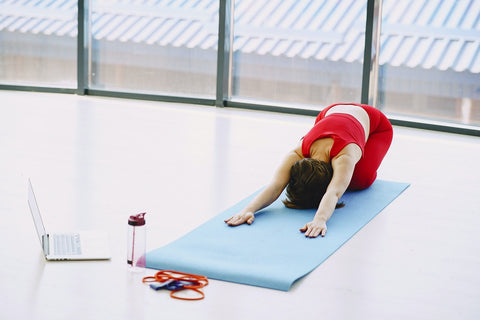
This stretch helps ease tension in your hips, glutes, and lower back, which can often set in after a lumbar injury.
- Get on your hands and knees on a mat.
- Spread your knees so they touch the sides of the mat.
- Adjust your feet so that your big toes touch and the tops of your feet lay on the mat.
- Rest your belly between your thighs and place your forehead on the floor. If you find this uncomfortable, rest your forehead on a block or your hands.
- Stretch your arms in front of you with your palms flat on the floor.
- Hold for 30 seconds, then release.
How to avoid getting lower back pain again
Assess your form.
- Keep your feet hip-width apart.
- Use an overhand grip and grip the bar just outside the legs.
- DO NOT arch or curl your back. Keep your spine nice and flat throughout the lift, and press your shoulders back and down.
- Make sure the bar keeps constant contact with your legs.
- Move your hips and knees together to lift the bar from the floor onto your upper thighs.
Deadlift in a brace. Our LumboTrain or Sports Back Support will provide extra protection for your lumbar without sacrificing mobility.
Keep your back and legs flexible. Tight muscles are more prone to injury and can make it challenging to maintain good form.
Keep strengthening your back, glutes, and core. Something as strenuous as a deadlift should only be one of many strengthening exercises you do for these areas.
Develop a good recovery routine. Growing muscle is a costly process that damages muscle tissue on a micro-level. So, to avoid injury, you’ll need to implement a good cool-down routine, rest days, and cross-train (i.e., don’t have two leg days in a row.
To sum up
If you’ve got lower back pain from deadlifts, it’s not normal. But it is usually fixable. As long as you seek specialist advice, take a break, brace, and work on your back strength and flexibility, you’ll be well on your way to recovery.
Weightlift often? Check out our Performance range: Bauerfeind Sports Performance
If you require assistance selecting the right product for your needs or wearing the brace, call us on 1300 668 466 or contact us via live chat.
Do you have private health? Most private health extras will cover Bauerfeind Products. Check to see if yours is included. Bauerfeind Private Health Insurance Inquiry.



